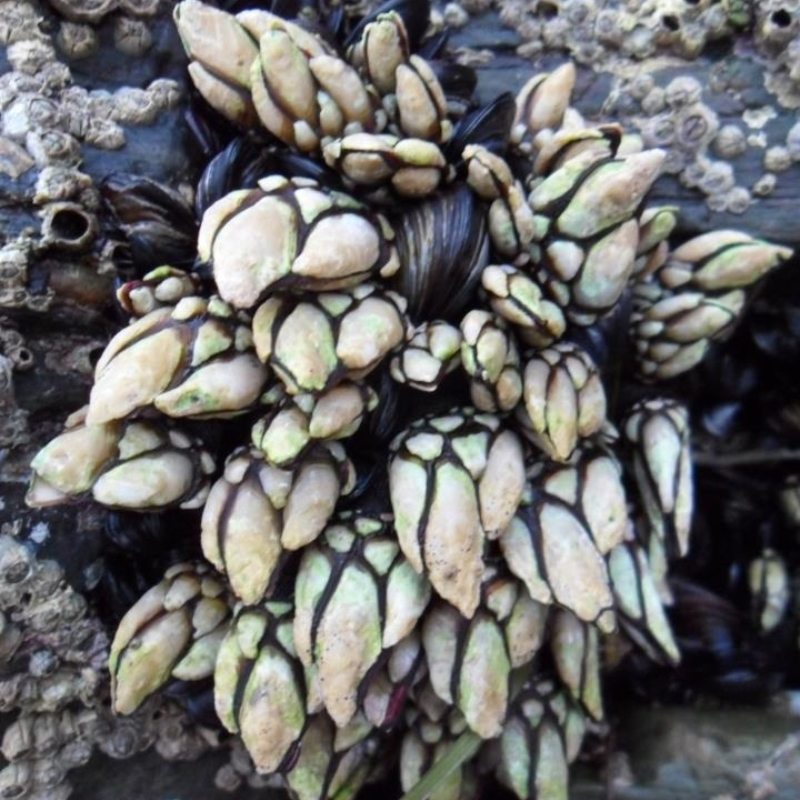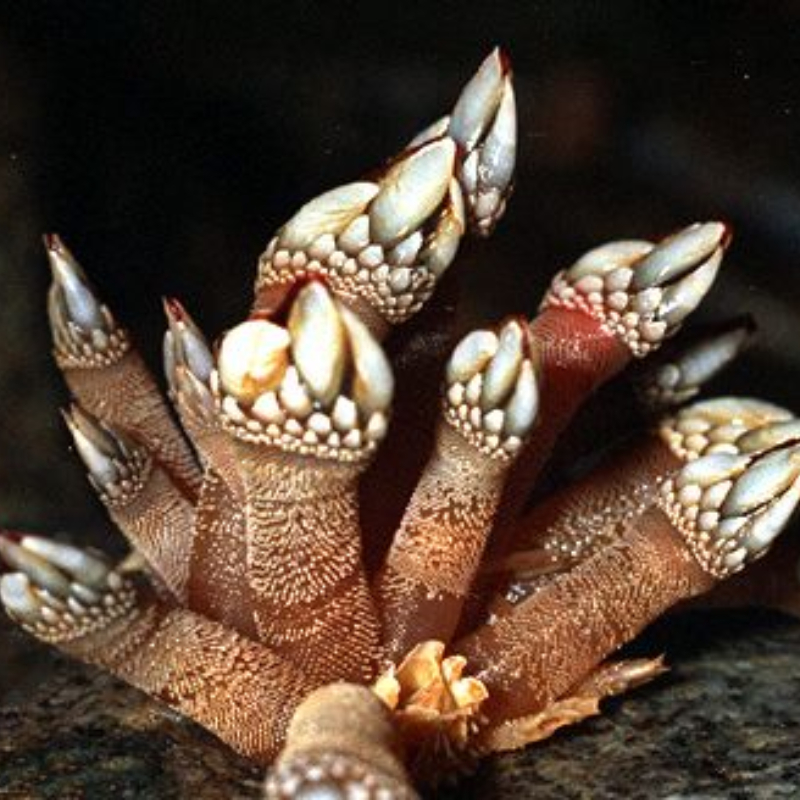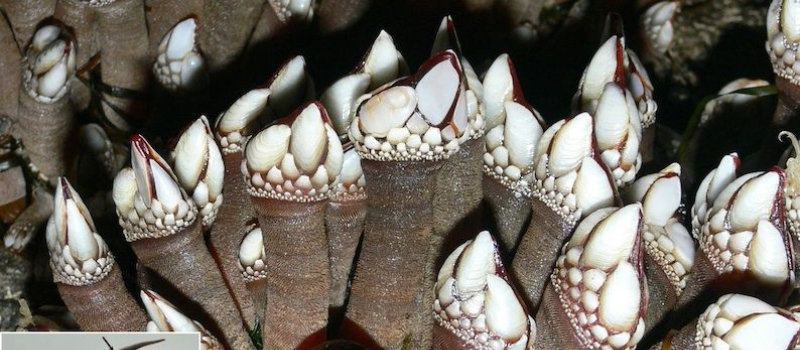He thought he was just taking a photo… until something was added to the picture that wasn’t really there, and that’s what it was.
I have always loved the sea — that place where the wind smells of salt and the waves whisper things no human tongue can repeat. There’s a strange holiness in the rhythm of water crashing against stone, a pulse that feels alive, as if the ocean itself is breathing beneath your feet. That morning, I had gone down to the shore to photograph the sunrise, expecting nothing but silence and light. Yet what I found that day changed something deep within me, reshaping how I saw the line between life and the unexplainable.
The air was cold, the tide restless. I walked slowly, camera in hand, when something unusual caught my eye — something that didn’t belong to the familiar language of shells and stones. In a small hollow of the rock, I saw shapes pushing outward, soft and pale, as though the stone itself had grown flesh. At first, I thought it was coral, maybe a strange plant torn from the sea floor. But when I looked closer, my heart skipped. The shapes were unmistakably human — thick, fleshy, bending slightly under the weight of the wind. Fingers. Real or not, I couldn’t tell. Each had a hard, white tip that looked like a nail.

I moved closer, drawn by something I couldn’t name. A wave hit the rock, and I swear those fingers trembled. One even flinched, as though reacting to the cold touch of the water. For a moment, I stood frozen, unable to breathe. I whispered to the wind, “What are you?” and reached out, trembling. But just as my hand hovered above them, a chill ran through me, not from the breeze, but from something unseen — the unmistakable feeling of being watched. I froze where I stood, the world suddenly too quiet.
Then I heard footsteps crunching on the wet sand. Turning, I saw the old beach warden, his face weathered like driftwood, his eyes pale and distant. He came to stand beside me, staring at the same spot. His voice was quiet, almost reverent when he spoke. “Don’t get too close,” he said. “Those are the Fingers of the Sea.”
I frowned. “The what?”

“They appear only where ships have gone down,” he said, still gazing at the rock. “When the sea keeps a soul it cannot release, it grows these things — hands that reach from stone. Some say they’re memories that forgot how to die.”
I laughed nervously, pretending not to believe him. But when I met his eyes, the laughter died in my throat. There was no hint of a smile there. His stare was hollow, like the deep places of the sea that light never touches.
After he left, I lifted my camera and took a photo, trying to convince myself it was just a strange marine creature. But when I looked at the screen, my heart stopped. There was one more finger in the picture than I had seen before — seven instead of six. I blinked, counted again. The new one was crooked, bent slightly toward me, as if beckoning.

That night, I couldn’t sleep. I kept hearing his words — “the sea keeps its souls” — echoing in the dark. So I began to search for an explanation. What I found was both fascinating and unsettling. The creatures I had seen were real — *Pollicipes pollicipes*, or goose barnacles. Crustaceans, the scientists said, relatives of crabs and shrimp. They attach themselves to rocks with fleshy stalks and grow plates that resemble nails.
Yet what made my skin crawl was learning where they prefer to live: on shipwrecks, on the drowned remains of boats and driftwood lost for decades. In the oldest marine journals, they had a darker name — “dead men’s fingers.”
I opened my photo again. In the same spot where the seventh finger had appeared, I noticed a faint glimmer, a small curve of silver beneath the surface texture. I zoomed in. It was a ring — a sailor’s ring, corroded but still whole. I remembered the warden’s words once more: *The sea keeps its souls.*

The next day I returned to that same stretch of shore. The air was still. The waves came and went without sound. The rock was bare. The “fingers” were gone — only a damp mark remained where they had grown. And between two stones, something gleamed in the morning light. A small metallic ring. I picked it up. The air seemed to tighten around me, as if something recognized my touch. It felt like the sea was exhaling through me.
I keep that ring now, locked inside a glass jar filled with seawater. Late at night, when the house is quiet, I sometimes hear a faint splash, a sound too deliberate to be my imagination. And when I turn my head, the water inside the jar ripples, as if something unseen brushed against the glass from within.

People tell me it’s coincidence — reflections, tricks of the mind. But I remember the cold that went through my body that day. I remember the trembling of those living rocks. I saw it all not through a lens, but with my own eyes.
I don’t show that photograph anymore. I tried once, weeks later, on another computer. The image loaded slowly. My heart sank when I counted again. There were more fingers now. Two more than before.
They say the sea sometimes chooses the ones who notice too much. And if you ever see a rock that seems to breathe as the tide rolls in — don’t touch it. Sometimes it’s only watching. But sometimes… it’s waiting.




